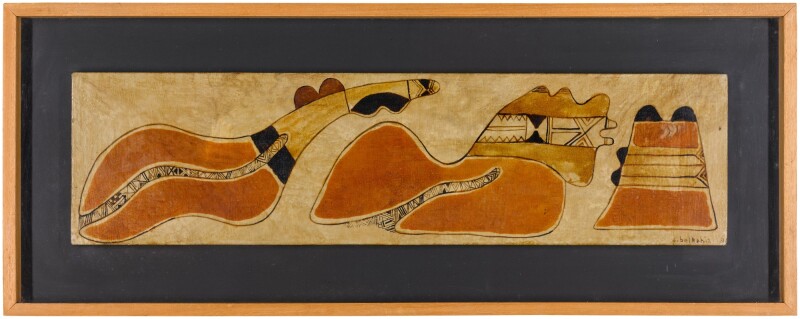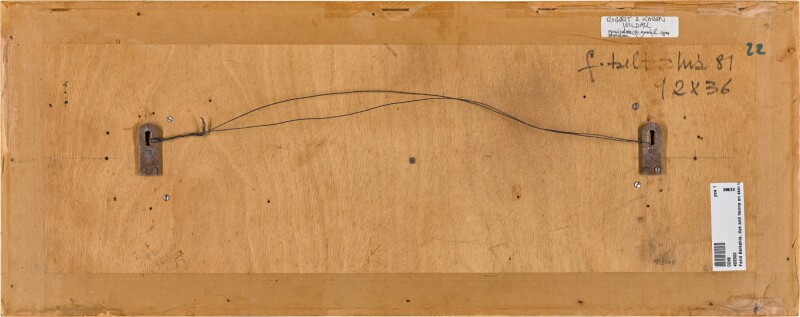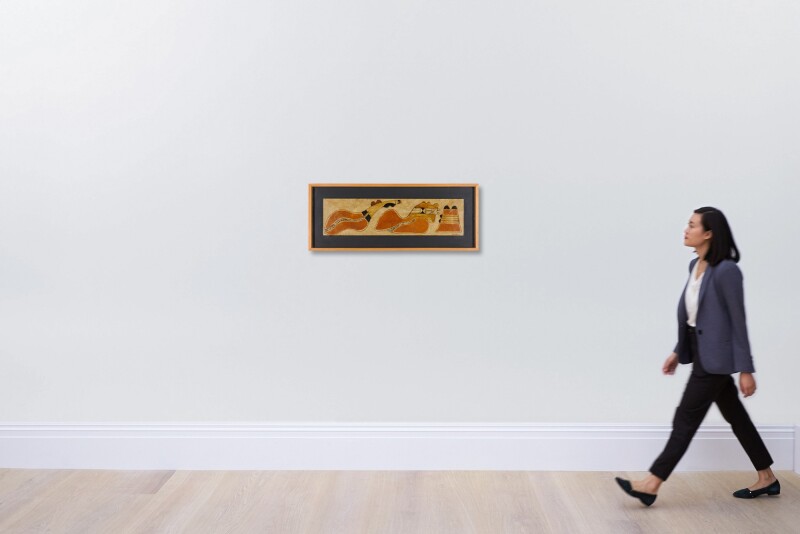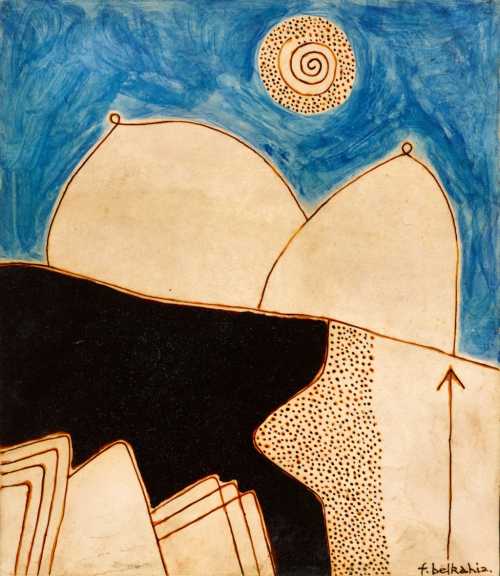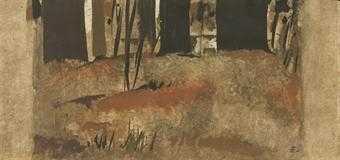- Untitled 1981
- Ink on vellum
- Painting
- 76 * 20 cm
- Signed and dated '81Framed: 36.5 by 92 cm. 14¼ by 36¼ in.The authenticity of this work has kindly been confirmed by the Farid Belkahia Foundation
27 April 2023
Estimation
£10,000
12,427 USD
-
£15,000
18,640 USD
Realized Price
£20,320
25,252 USD
62.56%
Auction Histories
20th Century Art / Middle East
-
Sotheby's
23 March 2022
Unsold
Artwork Description
“Tradition is the future of Man” (Farid Belkahia)
Farid Belkahia (1934-2014) was a pioneer of modern art in Morocco. The artist strived to develop a new iconography inspired by Moroccan tradition and notions of mysticism and reminiscences. Like many of his contemporaries, he believed that the principles of Arabic calligraphy were essential in developing a regional modern style of painting. He taught the discipline as the Director of the Ecole des Beaux-Arts in Casablanca, before making it a key component of the ‘Casablanca Group’, an artistic school he founded alongside Mohammed Melehi (see lots 7 to 12, and 50 to 55) and Mohamed Chebaa. Together, they explored ways to bridge the gap between tradition and modernity, craft and fine art, and ultimately East and West.
True to his convictions, Belkahia abandoned canvas and oil paint in 1965, preferring to work with natural pigments and organic surfaces. Processing animal skins himself before applying pigments sourced from mineral and plant origin, this is how he developed the distinct style visible in the present lot.
This stretched leather painting incorporates typical motifs of Berber tradition. The vellum evokes animal sacrifice, while the warm henna tones recall joyful local celebrations. The natural colorant employed in this painting, called Smagh, has historically been used for sacred Qur’an inscriptions over wooden tablets. Vellum is also the material of parchment, on which some of the earliest copies of the Qur’an were recorded. On this painting, the undulating shapes seems to flow through the vellum, spreading a vital energy of primitive nature, almost bestial. Through these dynamic artworks, Belkahia appeals to the fundamental sensory function of skin, conveying both sensuality and mysticism.
More lots by Farid Belkahia
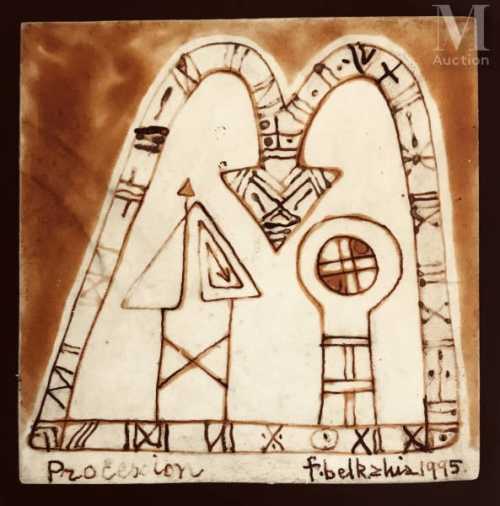
Procession
Estimation
€3,000
3,267 USD
-
€5,000
5,445 USD
Realized Price
€3,000
3,267 USD
25%
Sale Date
Millon & Associés
-
6 July 2023
Realized Price
93,337 USD
Min Estimate
48,187 USD
Max Estimate
68,658 USD
Average Artwork Worth
+48.955%
Average Growth of Artwork Worth
Sales Performance Against Estimates
Average & Median Sold Lot Value
2021 - 2025
Performance vs. Estimate
2021 - 2025
Sell-through Rate
2021 - 2025
Similar Artworks

Alexandria, Past and Present
Estimation
£6,000
7,525 USD
-
£10,000
12,542 USD
Realized Price
£14,025
17,591 USD
75.313%
Sale Date
Bonhams
-
24 May 2022

Night Fishing
Estimation
£6,000
7,525 USD
-
£10,000
12,542 USD
Realized Price
£14,025
17,591 USD
75.313%
Sale Date
Bonhams
-
24 May 2022

